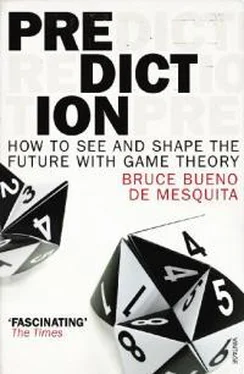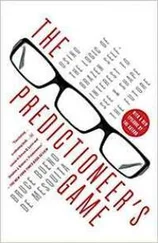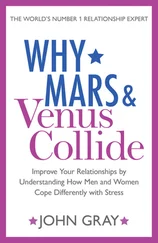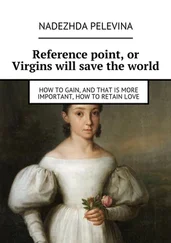Columbus first put forth his proposal—to find a westward passage to Asia—to the Portuguese crown, then the world’s greatest sea power. He would sail for Japan by going west from the Canary Islands. According to his reckoning, the distance to Asia was about 2,400 nautical miles. He did not think that a significant land mass was in the way of the passage, although he did expect to encounter some unknown islands. Columbus understood that there was a real risk that there would be no opportunity to get fresh water and food for his crew once they left the Canary Islands, but he did not view this as a severe problem. He believed his ships could carry enough food and fresh water for such a journey. He felt that he would have no trouble reaching his destination or returning safely. Columbus asked Prince Juan II of Portugal to fund his project—and was turned down flat.
Many factors worked against Columbus’s effort to sell his ideas to Portugal. Thanks to the vision of Prince Henry the Navigator, they already had lucrative trade routes and colonial expansion along the North African coast and as far away as the Azores, about 900 miles out in the deep water of the Atlantic Ocean. Additionally, at about the same time that Columbus made his offer, Bartholomew Dias discovered the Cape of Good Hope at the tip of Africa, and therefore, implicitly, the passage up the eastern side of Africa and on to Asia. Dias was already under commission by the Portuguese government and had, by the late 1480s, discovered critical features of an eastward path to the Indies. The sea route he found offered ample opportunities for resupplying ships at coastal stations along the eastern shores of Africa. And finally, Portuguese scientists disagreed with Columbus’s estimate that the journey involved only 2,400 miles. They thought that the distance between Portugal and Japan going west was not much different from the distance between these two countries going east around the tip of Africa. They believed the distance from the Canary Islands to Japan was about 10,000 miles (it is actually about 10,600 miles), plus the additional miles from Lisbon to the Canaries. This difference in estimates of the distance was crucial. From the Portuguese perspective, the probability that ships could reach Asia by sailing west was almost zero. No ship of the day was capable of a ten-thousand-mile journey without stopping in ports along the way for food and water. Quite simply, the Portuguese government believed that such a journey was doomed. There just wasn’t much in Columbus’s plan for the Portuguese.
Disappointed, Columbus sought support elsewhere. His brother, Bartholomew, tried to entice the kings of France and England, but they were tied up in domestic political problems at the time and showed no interest. Columbus approached the Spanish government in 1486. As with his brother’s efforts in France and England, Columbus found little to encourage him in Spain. The Spanish monarchy was too busy to pay much attention to Columbus. There was trouble with their Moorish neighbors and with the pope, especially since the Spaniards had backed the schismatic pope in Avignon.
Columbus, having no place else to turn, stayed on in Spain for the next six years, repeatedly being put off, awaiting the findings of governmental commissions studying his proposal. He was told that a firm decision could not be made until Spain resolved some of its internal problems, most notably its war with the Muslim-dominated Spanish state of Granada. That struggle finally came to an end in 1492. In fact, 1492 marked a major turning point for Spain. The defeat of Granada in January meant that all of the important kingdoms of Spain were now united under Ferdinand and Isabella. At last they were ready to turn to the proposal made by Columbus. His time had come, but the circumstances were not so much in his favor, and he knew it.
The Talavera Commission had reported to Isabella in 1490 that Columbus’s plan was weak and advised against backing him. Like the Portuguese, members of Spain’s Talavera Commission felt that Columbus greatly underestimated the distance across the ocean between Spain and Japan. Columbus was able to point to evidence to support his estimate of the distance. He noted that bodies and unknown trees occasionally washed ashore. These, he pointed out, had decayed by amounts that were consistent with his estimate of the sailing distance. Of course he did not know—how could he?—that he was about right regarding the distance to the next really big landmass, but that landmass was not Asia, it was the Americas.
Columbus grew weary of waiting and made a take-it-or-leave-it offer. Given the negative reports on his prospects of success, and given that he was demanding payment up front, Columbus found himself once again facing rejection. Ferdinand, in particular, preferred leaving Columbus’s proposal to taking it. And so Columbus packed his bags and headed out of town. But this time, thanks to the intervention of Luís de Santangel, the course of Spanish-American history was assured.
Santangel, keeper of the Spanish Privy Purse, was roughly the Spanish equivalent of today’s U.S. secretary of the treasury. He saw the potential merits behind Columbus’s plan, and—most important—he saw a way to justify the risks by diminishing the costs. He called on the queen the very day that Columbus left Santa Fe, urging her to meet Columbus’s terms. Santangel feared (apparently mistakenly) that Columbus would sell his plan to one of Spain’s competitors.
Eventually he persuaded Isabella, who was more sympathetic than Ferdinand, to support the proposed journey provided that he, Santangel, would raise the money. It all came down to a matter of price. Columbus had begun by insisting that the Spanish monarchs pay the costs of the expedition in advance, including his compensation. The Spanish crown was unwilling to meet those terms. Later he reduced his price, asking only for the cost of three ships and their provisions and crew up front. He agreed to a 10 percent commission for himself and his heirs drawn from any wealth generated by his discoveries. That meant a smaller upfront cost, and it meant shifting most of the risk to Columbus and his sailors.
Of course, if Columbus succeeded, the value to Spain would be enormous: Spain would dominate a lucrative trade route and would become—as it did—a major economic force in Europe and the world. Under existing circumstances, Spain had no access to the Indies at all. They did not know of the eastward route around the tip of Africa, because the Portuguese kept their navigational charts secret. The Italians, Arabs, and others garnered the benefits from the overland caravan trade. But failure had its risks too. If the monarchs had paid out of Spain’s budget, they would have faced a real prospect of rebellion by Spain’s aristocrats. These very people had tried to overthrow Isabella’s father just a quarter of a century earlier, so theirs was no idle threat. That is why Santangel’s decision to raise the money privately was so crucial to Ferdinand’s change of view. He had removed the threat of rebellion by the Spanish aristocrats, who would have resented being taxed to pay for a scheme with little chance of success. Whatever the modern take on Columbus, we surely owe Luís de Santangel three cheers for a job well done.
The Spanish decision is readily modeled with just four players: Ferdinand, Isabella, Santangel, and Columbus. As is fairly typical of a negotiated contract or business acquisition, price is a big issue. Columbus wants the most he can get. Ferdinand wants to pay nothing now; he wants it all on spec. Isabella is less negative than Ferdinand, while Santangel is supportive of the proposed exploration, but only at a price he can raise. Columbus cares most, of course, followed by Santangel and then Isabella. Ferdinand is least focused on Columbus’s proposal, being more concerned with mending fences with the pope in Rome and managing his newly unified country. As king, Ferdinand has the most clout, but Isabella was no slouch and neither was Santangel. Columbus probably had relatively little ability to persuade anyone. After all, he had failed in his efforts for six years. Here, then, is the data set I constructed:
Читать дальше











